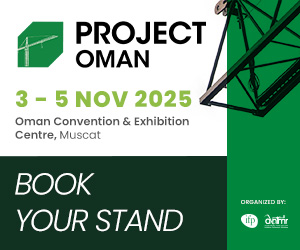Doha is solidifying its reputation as a global wealth center, attracting international real estate investors thanks to Qatar’s strong economic planning, sectoral opportunities, and strategic infrastructure investments, according to Knight Frank’s latest Doha Wealth Hub Series report.
Qatar’s economic foundation has been shaped by the 2030 Qatar National Vision, launched in 2018, which has driven infrastructure and real estate spending of approximately $90 billion to date.
Office Market Strengthens with Major Moves
The third National Development Strategy (2024–2030) focuses on diversifying the economy, boosting foreign investment, and strengthening Qatar’s global competitiveness. Demand for office space has been largely driven by public sector entities. Qatar Airways, for example, is set to relocate its headquarters this year to the $5.5 billion Msheireb Downtown, reinforcing the area’s status as a premium business hub.
Doha’s most expensive office spaces are in West Bay-Prime, where rents reach $28.80 per sq ft/month, followed by Marina District at $26.60 per sq ft/month, attracting multinational firms across finance, technology, and consulting.
This momentum is underpinned by major infrastructure projects, including the $9.9 billion Doha Metro and the $4.4 billion Hamad International Airport, which now connects to over 180 cities globally.
“Doha’s low traffic levels, combined with cultural vibrancy, economic ambition, and liveability, are reinforcing its emergence as a global city,” said Faisal Durrani, Head of Research for MENA at Knight Frank.
Residential Market and Luxury Demand
Qatar’s residential market recorded $3.2 billion in property sales in 2023. Luxury waterfront areas remain in high demand, with Qanat Quartier averaging $385 per sq ft, The Waterfront at $395, and Marina District at $375. Within the villa segment, top pricing was seen in Abu Hamour at $237 per sq ft, followed by Al Thumama and Al Kheesa.
“Doha continues to rank among the safest cities worldwide and offers competitive living costs compared to other global business hubs,” said Adam Stewart, Knight Frank’s Partner and Head of Qatar.
Booming Tourism and Retail
Qatar’s tourism sector expanded by 31% in 2023 to reach $22.3 billion, accounting for 10.3% of GDP. The World Travel & Tourism Council projects this figure to grow to $37.1 billion (12.8% of GDP) by 2034, with international visitor spending estimated to hit $31.9 billion.
The hospitality sector added 1,000 hotel rooms in 2024, bringing the total to 38,100 keys. By 2027, this is expected to rise to 42,700 keys, with 60% of rooms under international brands. Tourism has been boosted by global sporting events and attractions such as The Pearl and Lusail Boulevard, drawing 5.08 million visitors in 2024—a 25% annual increase.
On the retail front, Qatar has added 9.5 million sq ft of luxury retail space since 2011. Events like Shop Qatar continue to drive regional tourism and consumer activity. “Our survey found 79% of GCC nationals and residents are willing to travel to Qatar solely for shopping,” noted Amar Hussain, Associate Partner.
Leading in Green Building and Sustainability
Qatar ranks among the global leaders in sustainable development outside the U.S., with 115 LEED-certified projects totaling 22.6 million sq ft. Msheireb Downtown is a flagship project aiming to house one of the world’s largest collections of LEED-certified buildings.
In addition, Qatar’s own Global Sustainability Assessment System (GSAS) has certified over 1,400 buildings, tailored specifically for the Gulf’s climate and environmental needs.
“Doha’s transformation goes beyond regional ambition. It is building a global real estate profile rooted in sustainability, infrastructure investment, and long-term vision,” said Durrani.
Source: arabianbusiness.com



















































































